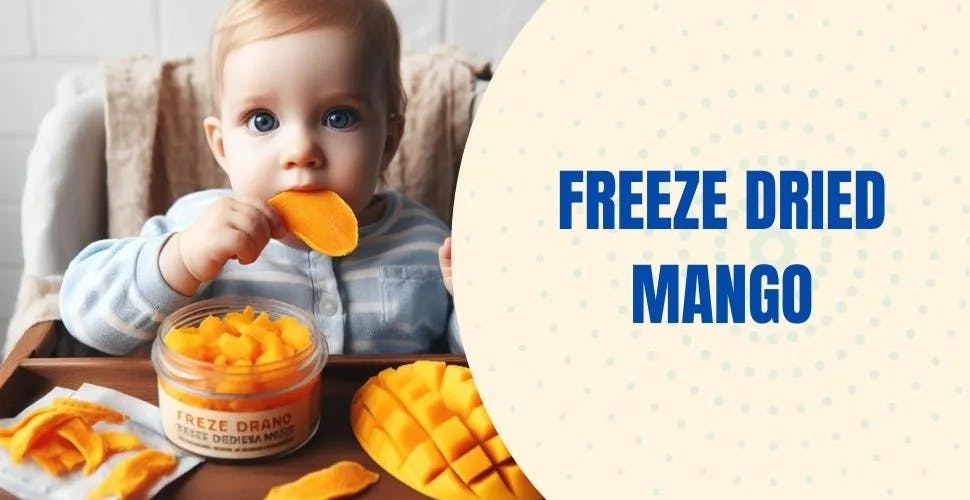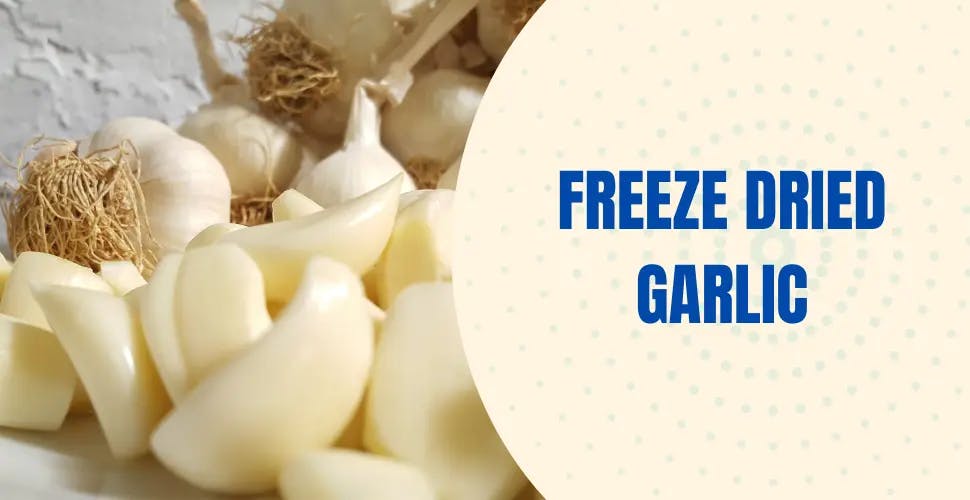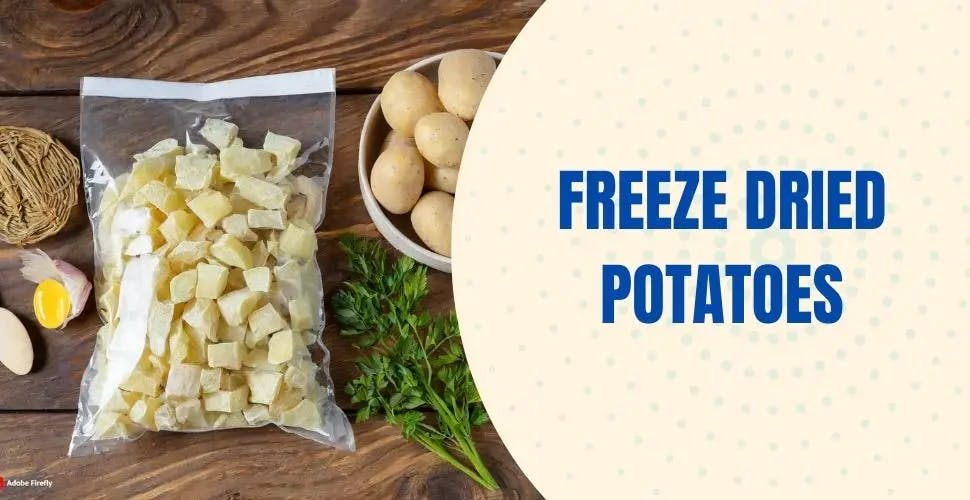Freeze Dried Mango: How to Make & Use
 Dr. Tontul
Dr. Tontul- 04 Oct 2023

What Are Freeze Dried Mango
Freeze dried mangoes are regular fruits that have undergone a special preservation process known as "freeze drying" or "lyophilization". This is an intricate process, involving the mangoes being quickly frozen and then placed in a vacuum chamber. The method retains the fruit's essential nutrients and flavor, but removes all the water content, leaving a light, crunchy, and refreshingly sweet snack.
The mango freeze drying process is unique in that it allows the fruit to maintain its original shape and color, even after all the moisture has been extracted. This makes freeze dried mangoes not only a convenience for hikers, astronauts, and athletes, but also an appealing, healthier alternative to conventional chips or sweets. The process ensures a longer shelf life and makes distribution and storage significantly easier and more eco-friendly.
Freeze dried mangoes offer numerous advantages over products preserved using other techniques like dehydration:
- Physical quality: Freeze drying provides physical properties like minimal shrinkage, negligible discoloration, and superior rehydration ability compared to other methods.
- Nutritional quality: Freeze drying involves very low temperatures, resulting in minimal loss of vitamins and other health-beneficial compounds of mangoes.
- Chemical safety: Scientific studies showed that mangoes preserved using freeze drying cause much less formation of heat-induced toxic compounds such as HMF and acrylamide.
- Shelf life: Freeze dried mangoes have a considerably longer shelf life compared to alternative methods.
- Sensory properties: The compounds that provide the unique sensorial properties of mango are sensitive to heat. Therefore, heat treatments cause a change in this aroma and flavor. However, freeze drying causes minimal change in flavor and aroma due to the application of low temperatures.
- Diversity of use: Freeze-dried mango can be consumed directly as a snack or used in various desserts and drinks. It can be used easily in granolas, oatmelas, cakes, smoothies and cocktails.
Freeze Drying vs Different Drying Techniques for Mangoes
In a scientific study, freeze-drying, dehydration and microwave drying were compared for mango drying based on color, antioxidant capacity and total phenolic content. While freeze-dried mangoes had similar color characteristics to fresh samples, both dehydration and microwave drying caused significant color change. The antioxidant capacity of freeze-dried mangoes was much higher than that of dehydrated and microwave-dried samples. On the other hand, the total phenolic content of freeze-dried mangoes was the second highest after microwave drying at 350W.
In another study, researchers compared the physical quality of mango powders produced with cast-tape drying, freeze drying, and spray drying. The results showed that, freeze drying provided better solubility and color properties.
Researchers from Taiwan studied the effect of drying techniques and (freeze drying and hot air drying) and pre-treatments (no pre-treatment, soaking in in 1% NaHSO3 and soaking in 1% ascorbic acid) on the carotenoids content of mangoes. Their results showed that freeze dried mangoes contain all-trans-β-carotene, neochrome, violaxanthin, zeaxanthin, luteoxanthin, neoxanthin and lutein. Freeze drying and soaking in NaHSO3 as pre-treatment provided highest content of total carotenoids. Also soaking in both solution caused better color properties in freeze-dried mangoes.
Are Freeze Dried Mango Beneficial for You
Yes, freeze-dried mangoes are packed with vitamins, fiber and antioxidants, all of which contribute to supporting overall health.
As a rich source of Vitamin C, it supports the immune system, aids in iron absorption, and reduces heart disease risks.
Dietary fiber, present in substantial quantities in dried mangoes, promotes digestive health and aids in weight management.
The antioxidant content combats harmful free radicals, reducing inflammation and slowing down the aging process. So, with a myriad of health benefits, freeze dried mango undeniably paints a positive picture in the context of nutrition.
Scientific Studies on Health Benefits of Freeze Dried Mangoes
Only a few studies have determined the effects of freeze-dried mango consumption on blood glucose and lipid levels.
A pilot study examined the effects of freeze-dried mango supplementation on anthropometrics, body composition, and biochemical parameters in obese individuals. Results showed that freeze-dried mango supplementation significantly reduced blood glucose levels in both male and female participants. Freeze dried mango consumption also led to a reduction in hip circumference in male participants.
Another study investigated the effects of dietary supplementation of freeze-dried mango, fenofibrate (a hypolipidaemic drug), and rosiglitazone (a hypoglycaemic drug) on adiposity, glucose metabolism, and lipid profile in mice fed a high-fat diet. The results of the study showed that freeze-dried mango, similar to fenofibrate and rosiglitazone, protected against high-fat diet-induced increase in epididymal fat. It was also observed that freeze-dried mango consumption at the 1% level was more effective than rosiglitazone in reducing blood glucose.
An in vitro study has shown that freeze-dried mango is a suitable (ready-to-eat) functional food that may help prevent some carcinomas.
How to Make Freeze Dried Mango
Supplies needed
For production of a freeze dried mangoes you will need a bunch of supplies are needed.
- Freeze dryer
- Freezer
- Knife
- Colander
- Trays
- Parchment paper
- Mylar bags or mason jars
- Oxygen absorbers
- Cutting board (for slicing)
- Blender (for pureeing)
Step 1: Raw Material Selection
The most crucial step in producing high-quality freeze dried mangoes is to utilize premium raw materials.
Although you can use frozen mangoes as raw material, using fresh mangoes will be more cost-effective. If you are using frozen mangoes, you can proceed directly to step 3.
It is advisable to opt for fully ripe and organic mangoes for drying, whether using fresh or frozen raw materials. Freeze drying of unripe mangoes will result in a tart and more acidic end product.
Step 2: Washing, Peeling and Cutting
The use of pesticides is not common in mango production. The protective skin is thick and easy to clean. Therefore, mangoes that are thoroughly cleaned with water should be peeled.
Peeled mangoes can be dried as slices, small cubes or puree. Generally, slices with a thickness of 0.12-0.16 inches are more preferable in terms of drying time and tooth resistance during eating. A uniform thickness during slicing is essential for a uniformly dried product. A fruit slicer can be used for this.
Cubes of around 0.2 inches are more suitable for consumption.
A blender should be used for pureeing. Puree drying is preferred in the production of powdered products. To do this, place the sliced mangoes in a blender and run the blender until a fine pulp is obtained. Whether the mixture is thick or viscous is not important for drying. The pulp should be spread in trays with a uniform thickness (preferably around 0.2 inches).
Step 3: Freezing
Put mango slices, cubes or pulps on trays lined with parchment paper, which simplifies cleanup. Overlapping the mangoes is acceptable, but pay attention to your freeze dryer's capacity. Nonetheless, spreading them out as much as possible on the tray will enhance drying performance.
The freezing step can be executed in a freeze dryer or using an external freezer. When utilizing an external freezer, put the trays inside of the freezer and wait between 2-8 hours until the products are thoroughly frozen.
Step 4: Freeze Drying
For pre-frozen mangoes, initiate your freeze dryer 30 minutes before commencing the process.
First, close the drain valve! Select the properties of your raw material (frozen, unfrozen, liquid, solid, etc.) in the dryer software you are employing. The software will provide guidance, and the dryer will initiate.
When the temperature descends to 32ºF (0ºC), the software will prompt you to place the trays. Insert the trays and select to proceed with the process. Generally, drying will conclude within 20-24 hours. This encompasses freezing, initial drying, and secondary drying.
Inspect the products upon completion of drying. To do so, take the thickest items, cut them in half, and check for coldness or moisture in the center. If present, extend the drying process by a few hours; if not, stop.
Step 5: Packaging and Storage
Once freeze drying is finished, separate the mangoes from the parchment paper. Store them in airtight jars and mylar bags. To counter oxygen-induced reactions, introduce an oxygen absorber and seal the packaging.
How Long Do Freeze Dried Mango Last
Freeze dried mangoes have a significantly longer shelf life compared to mangoes preserved using other methods such as dehydration. When appropriately stored in an airtight container, freeze dried mangoes can remain viable for up to 25-30 years.
This extended shelf life is a result of the complete removal of free water and the partial removal of bound water during the freeze drying process. This removal inhibits both microbial and chemical reactions.
However, freeze dried mangoes are more susceptible to environmental conditions due to their unique microstructure. Particularly in humid environments, they rapidly absorb moisture, leading to a soft and sticky texture. This process also accelerates chemical degradation reactions.
To prevent this outcome, it is essential to store them in a cool, dry place, away from direct sunlight.
Nutritional Facts of Freeze Dried Mangoes
Among freeze-dried fruits, mangoes stand out not only for their taste but also for their nutritional value. The freeze-drying process ensures that the mango's nutritional properties are preserved almost unchanged. The dried slices contain high amounts of dietary fiber and vitamin C. They also contain vitamin A, calcium, and potassium.
According to the USDA database, the nutritional values of three different freeze-dried mango brands are as follows
| Properties | Brand 1 | Brand 2 | Brand 3 |
|---|---|---|---|
| Energy (kcal) | 333 | 357 | 389 |
| Proteins (g) | 0 | 3.57 | 5.56 |
| Lipids (g) | 0 | 1.79 | 0 |
| Carbohydrates (g) | 90 | 89.3 | 88.9 |
| Fibers (g) | 10 | 10.7 | 5.6 |
| Calcium (mg) | 67 | 71 | 28 |
| Potassium (mg) | 167 | 1000 | 639 |
The vitamin C content of freeze dried mangoes was reported as 959 mg in 100 g. This means that about 9 grams of freeze-dried mangoes meet the daily vitamin C requirement of adults.
On the other hand, vitamin C level was determined as 225 mg/100g in another study. Therefore, vitamin C of the final product is affected by various factors such as raw material type, maturity level and storage time before drying.
How To Rehydrate Freeze Dried Mangoes
Freeze dried foods possess a remarkably high rehydration capacity; however, it's crucial to note that they won't fully revert to their original texture. After rehydration, they will become softer and more succulent.
The process of rehydrating freeze dried mangoes can be accomplished using water, fruit juice or milk. In one study freeze-dried mango slices (0.5 cm) were completely rehydrated in less than 20 minutes at 25ºC.
For the rehydration of freeze dried mangoes, simply place your desired quantity of freeze dried mangoes in a bowl and cover them with water. Allow them to soak for about 20 minutes until they absorb the water and plump up.
It's important to note that rehydrated freeze dried mangoes should be consumed within a few hours since they won't maintain the extended shelf life of the original freeze dried product. Store any unused portions in an airtight container in the refrigerator to preserve their freshness.
Where To Buy Freeze Dried Mangoes
Freeze dried mangoes can be found in a variety of places both online and in physical stores such as Trader's Joe and Walmart. One of the most popular places to buy them is on Amazon, where you can find a wide range of brands and sizes to choose from.
My suggested product in Amazon is as follows:
If you prefer to shop in person, you can also check your local grocery store. Some larger grocery stores carry freeze dried fruit in their health food section or in the snack aisle.
How to Use Freeze Dried Mangoes
Freeze-dried mangoes are a versatile ingredient that can be used in a variety of ways. Here are a few ideas:
- Eat them as a snack: Freeze-dried mangoes are a delicious and nutritious snack that can be enjoyed on their own. They are also a good source of vitamins A and C.
- Add them to yogurt, oatmeal, or cereal: Freeze-dried mangoes add a touch of sweetness and flavor to yogurt, oatmeal, and cereal. They are also a good source of fiber.
- Use them in baking: Freeze-dried mangoes can be used in a variety of baked goods, such as muffins, cakes, and cookies. They add a burst of sweetness and flavor to any dessert.
- Blend them into smoothies: Freeze-dried mangoes add a tropical twist to smoothies. They are also a good source of vitamins and minerals.
- Use them as a topping: Freeze-dried mangoes can be used as a topping for ice cream, yogurt, or other desserts. They can also be used to garnish salads or other savory dishes.
Customer Reviews on freeze dried mango
These comments are chosen from different products on Amazon
- I love the flavor and the taste ! Crunchy and fresh
- These are crunchy and tart. What I've found with other dried fruit options, is that sometimes all you taste is the added sugar, and no fruit. But these actually taste like mango. My 3 year old is a picky eater and she likes them too! It's too expensive for me buy on a regular basis, but it's a really nice treat every now and then.
- I love mangos, was a little skeptical to try freeze dried as sometimes they don't taste the same or it doesn't taste like anything at all. Well I am very happy I tried this brand it is very good, nice crunch, the flavor is very nice, not too strong or bitter either. Just perfect, will definitely be getting more of these brand again. Worth the price and the shipping was fast.
- I am new to freeze dried products so I think it may just be me, but I didn't care too much for the powderey feel of the product. But, I will say that taste %100 like mango and in a smoothie it works like a charm. If you are just going to use them in smoothies then I would purchase.
- Anyone can get addicted to these!
- Yum! I got these two days ago and they are all gone now. They are a little pricey, so I'll wait before I buy more, but I WILL buy more. Good mango flavor.
- I think I like these even more than freeze dried strawberries, they are so good. Before I knew it I had eaten the entire bag. This brand has really perfected freeze drying fruit. The pineapple variety is great too but after about ten pieces my tongue started to hurt, which always happens when I eat pineapple. I would definitely get these if you like mango and you like freeze dried fruit.
- Very good. A little tart which means it was fresh when freeze dried.
- Great for kids and adults. Freeze dried fruits are amazing. No added anything, just pure fruit. My husband loves these! He ate the whole bag at one sitting. He loves tropical fruit.
- Freeze dried so they hold their nutrients and their deliciousness! My whole family loves this mango.
- My wife loves these things, and so does our Black Labrador. Had to order more for both of them.
- Absolutely delicious! Out of this world!
- These are so tasty as a snack- only problem is I eat them too fast!
Frequently asked questions (FAQ)
What is freeze dried mango?
Freeze dried mangoes are durable snacks that have undergone a preservation process called freeze drying. This process involves freezing the mangoes and then removing moisture through a vacuum, resulting in a lightweight, crispy, and shelf-stable product.
Are freeze dried mangoes healthy?
Freeze-dried mangoes contain significant amounts of fiber, vitamin C, vitamin A and potassium. They are therefore a good alternative to high-fat snacks such as chocolate, wafers and crisps. However, they are also rich in sugar and should be eaten in moderation
Why are freeze dried mangoes so expensive?
The freeze drying process is complex and time-consuming, requiring specialized equipment and expertise. The cost of production, packaging, and handling contributes to the higher price of freeze dried mangoes compared to fresh, dehydrated or frozen ones.
Can you freeze dry mangoes at home?
Yes, it is possible to freeze dry mangoes at home, but it can be challenging without specialized equipment. The process involves freezing the mangoes and using a vacuum chamber to remove moisture, which might require professional-grade machinery.
Is freeze dried mangoes high in sugar?
Yes, the sugar content in freeze dried mangoes is about 22 g per ounce (28 g).
Can dogs have freeze dried mangoes?
Yes, dogs can have freeze dried mangoes in moderation. Freeze dried mangoes can be a healthy and low-calorie treat for dogs. However, it is better to give freeze-dried mangoes to your dog after rehydrating them.
Are freeze dried mangoes keto?
Freeze Dried mango is not keto-friendly because it is high in sugars. It may kick you out of ketosis even with a small serving size.
Can cats have freeze dried mangoes?
While small amounts of freeze dried mangoess are unlikely to be toxic to cats, it's important to note that cats are obligate carnivores, and their primary diet should consist of meat-based foods. Cats have different dietary needs than humans and even dogs, and their digestive systems are not well-equipped to process fruits and vegetables.
Therefore, it's generally recommended to avoid giving mangoes or other fruits to cats and to focus on providing them with a balanced and appropriate cat food. If you have concerns about your cat's diet, it's best to consult with a veterinarian.



